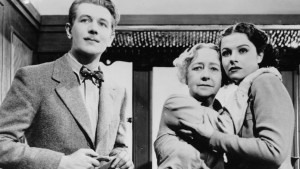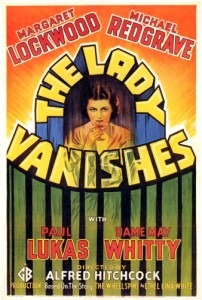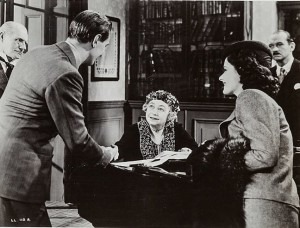
Michael Redgrave as the musicologist Gilbert, Dame May Whitty as Miss Froy, and Margaret Lockwood as Iris Henderson
Our heroine, Iris, is in the rustic European country of Mandrika and is heading back to London and a society wedding in Hanover Square (that would be at the Church of St. George, Handel’s church in London). She’s bothered by noise from the upstairs hotel room, which sounds like a room full of clog dancers and clarinet players, and pays the hotel manager to get rid of them. The clarinet player is the musicologist, Gilbert, who is collecting “one of the lost folk dances of Central Europe.”

The Lady Vanishes
Miss Froy sings the melody to the musicologist, who vows to commit it to memory, before she slips off into the woods. Now, she feels, there are two chances for the melody to get through successfully to “Mr. Callendar at the Foreign Office.”
Our daring couple escape, get to the Foreign Office where Gilbert, in a sudden attack of nerves, forgets the melody, which has been replaced in his head with the Wedding March (Iris isn’t going to have that society wedding after all!). The best part of all is when they get into the Foreign Office and there is Miss Froy playing the piece on piano, having already successfully delivered her melodic message. We can only hope that this is a faithful capturing of the Foreign Office in the 1930s, where offices were equipped with grand pianos as a matter of course!

The well-equipped Foreign Office of the 1930s
Williams: Devil’s Galop (Charles Williams Concerto Orchestra; Charles Williams, cond.)
We’ve never told how the message is encoded, but we do know that it takes a musician (and even a musicologist) to get the message through!
